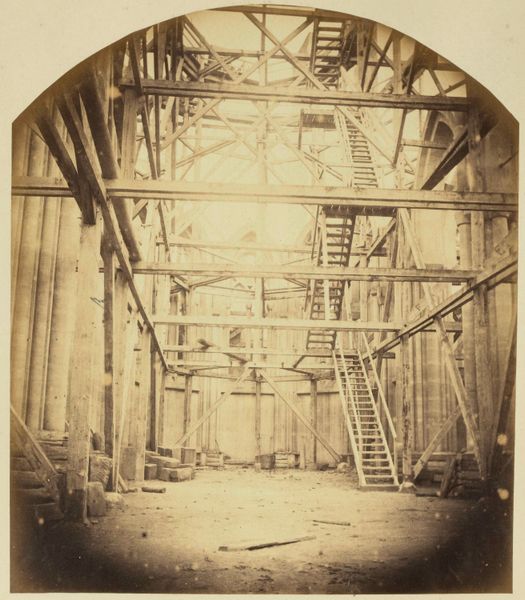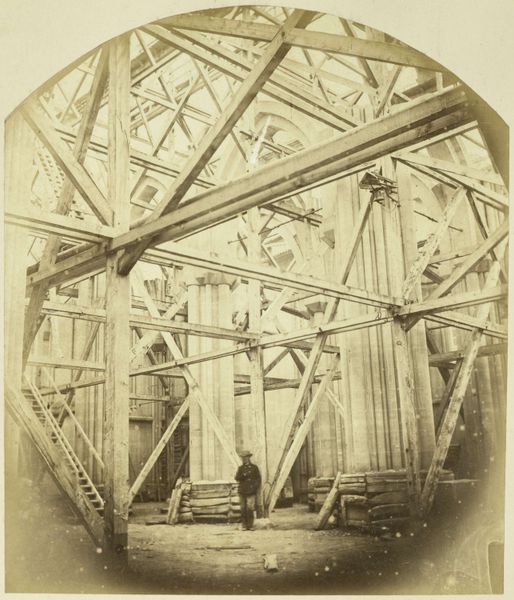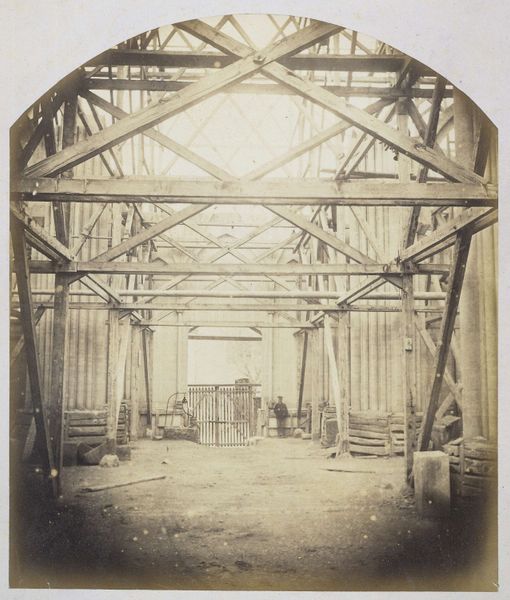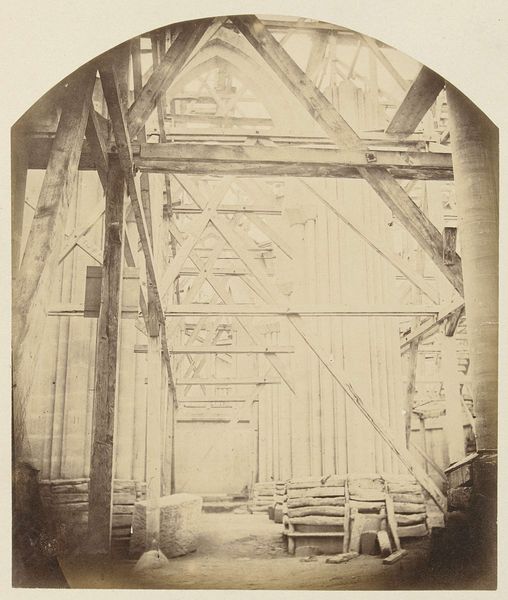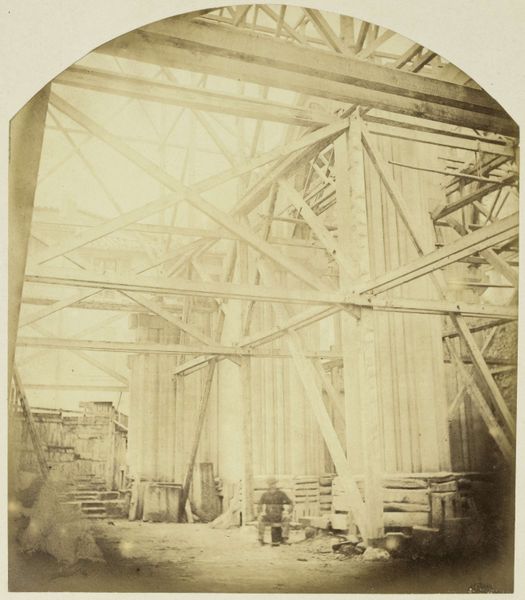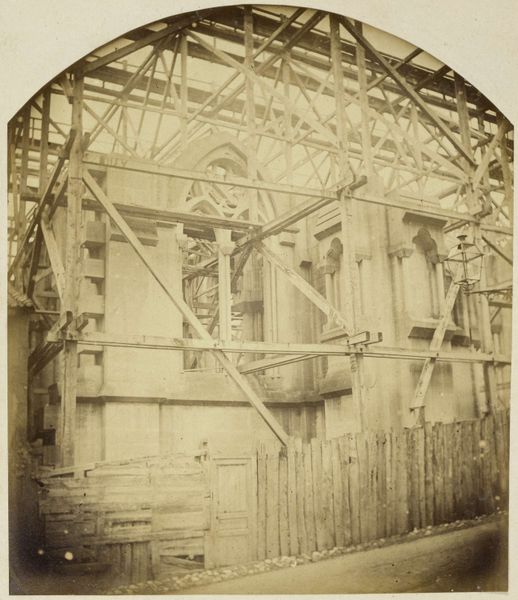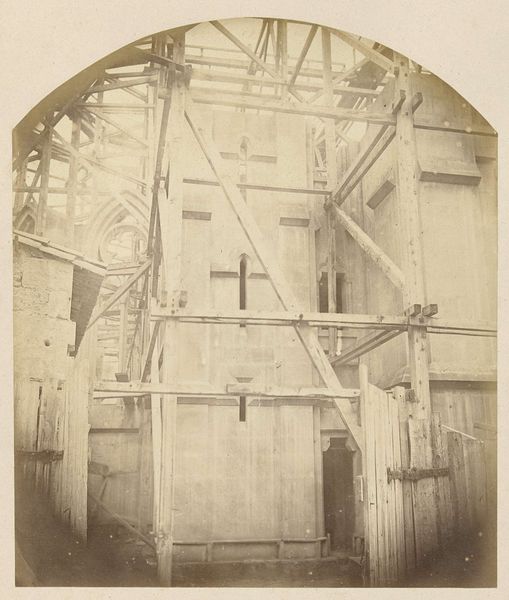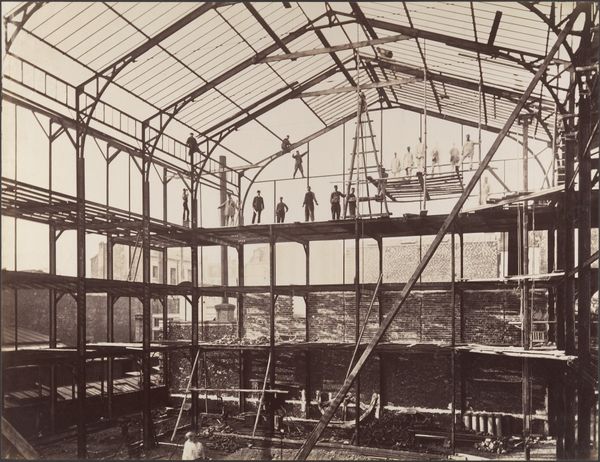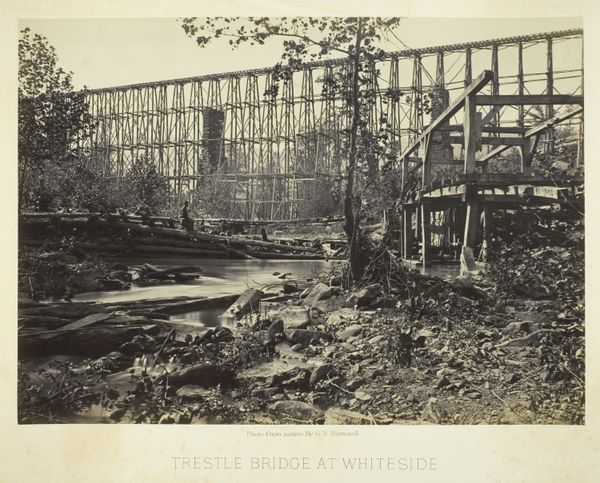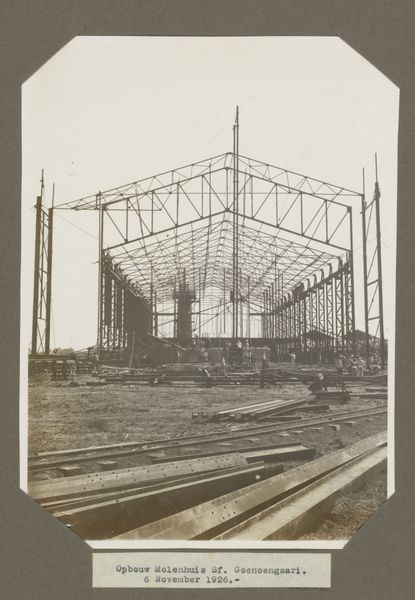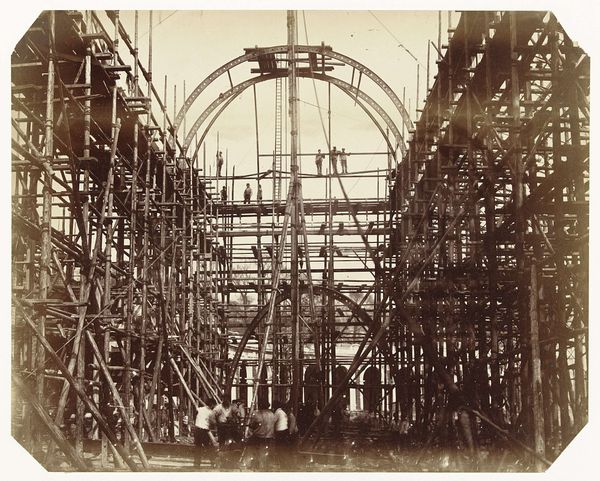
photography, albumen-print, architecture
#
photography
#
cityscape
#
history-painting
#
albumen-print
#
architecture
Dimensions: height 190 mm, width 163 mm, height 370 mm, width 298 mm
Copyright: Rijks Museum: Open Domain
Editor: This is "Église Saint-Vincent-de-Paul te Marseille in aanbouw," a photograph taken by Adolphe Terris sometime between 1855 and 1860. It's an albumen print showing the church under construction. I’m struck by the raw, skeletal structure—it exposes the labor behind such a grand building. What captures your attention about it? Curator: I see a potent image of the means of production. This isn't just about religious architecture; it's about the material and social processes that enable its creation. Look at the timber framework, the visible labor of its assembly. What can we infer about the economic conditions and available resources in Marseille at this time, judging by the scale and materials employed? Editor: It definitely speaks to the industrial capacity of the time. The amount of lumber used must have required a significant logging and milling operation. Do you think Terris was intentionally highlighting this aspect, or was it just a byproduct of documenting the construction? Curator: That’s precisely the critical question! Was Terris consciously critiquing or celebrating industrial progress? The composition, with its emphasis on the structural elements and the lone worker, hints at a deliberate focus on the human effort involved. Notice how the light falls on the timber versus the shadowed figure - what commentary is present, consciously or unconsciously, about labour in this photo? Editor: I hadn't thought about the light like that. It seems he's acknowledging the relationship between the church, industrial advancement, and the worker's role in making it happen. I appreciate you highlighting the importance of thinking about production beyond just the finished product. Curator: Exactly! Seeing art in this light really reveals layers of meaning we often overlook. It moves us away from the "great man" theory of art history and highlights the collective, material, and often unseen processes involved in creation. What did you learn by analysing the material present in the piece?
Comments
No comments
Be the first to comment and join the conversation on the ultimate creative platform.

